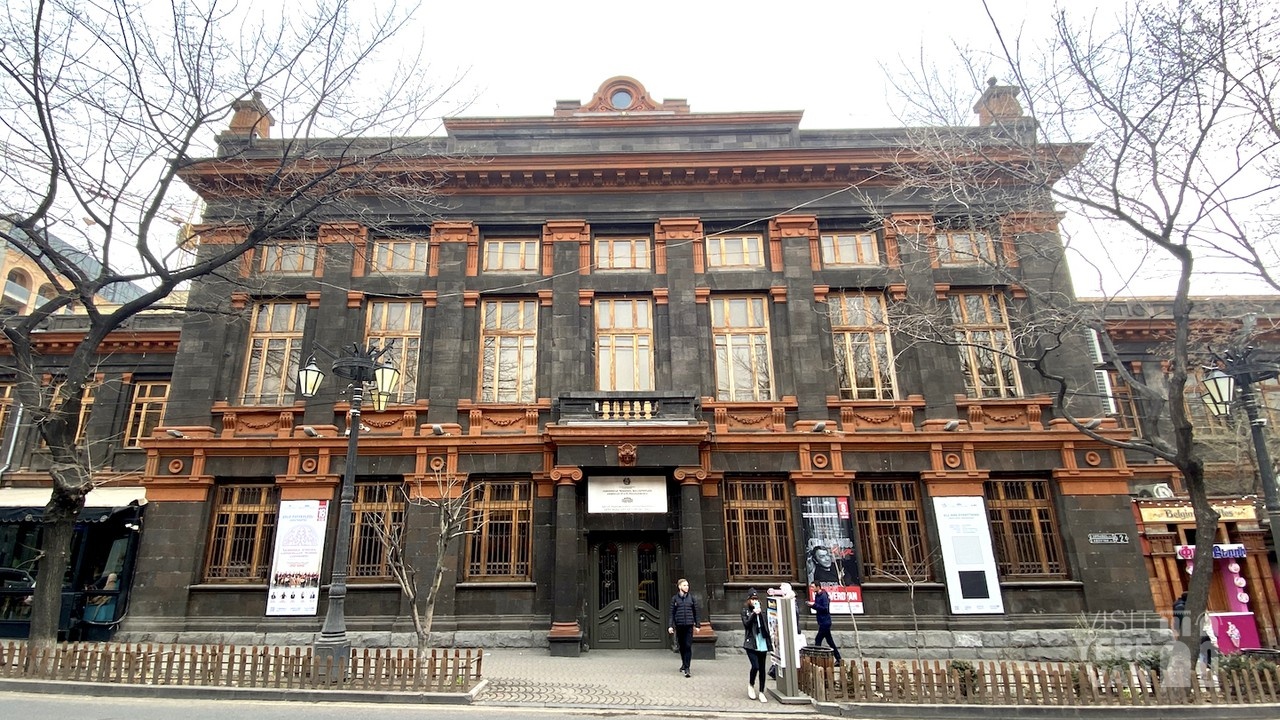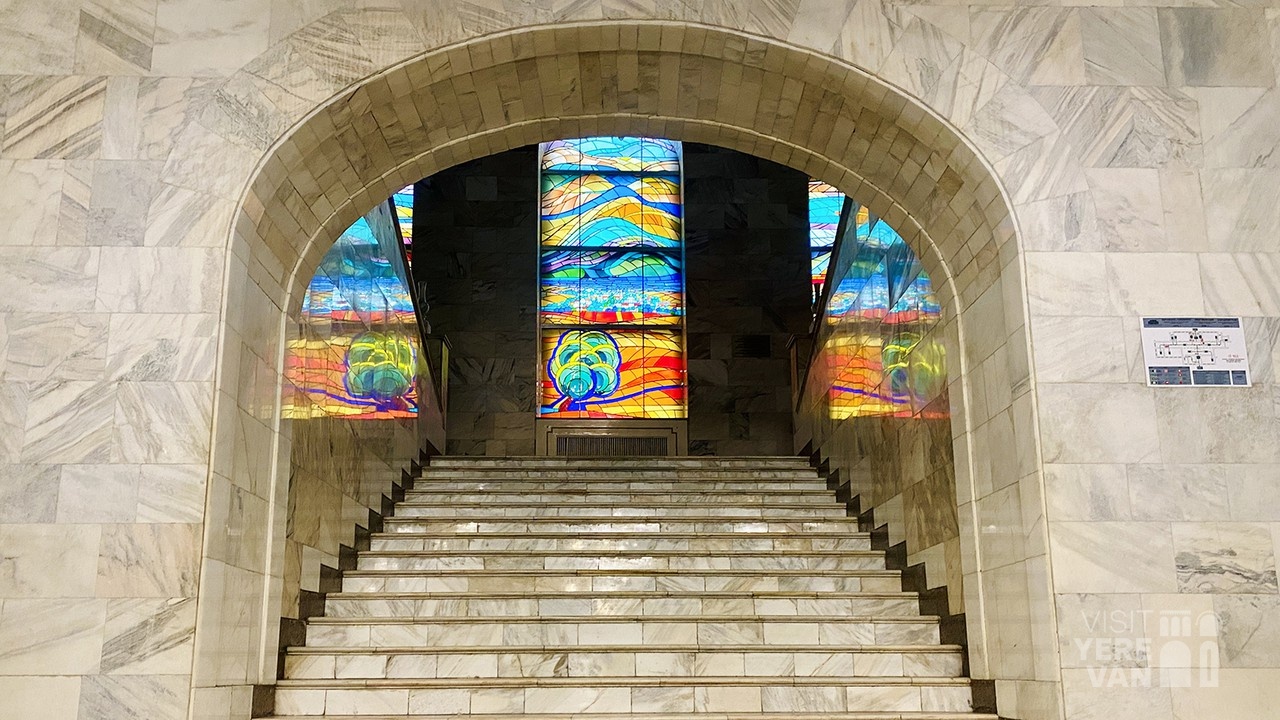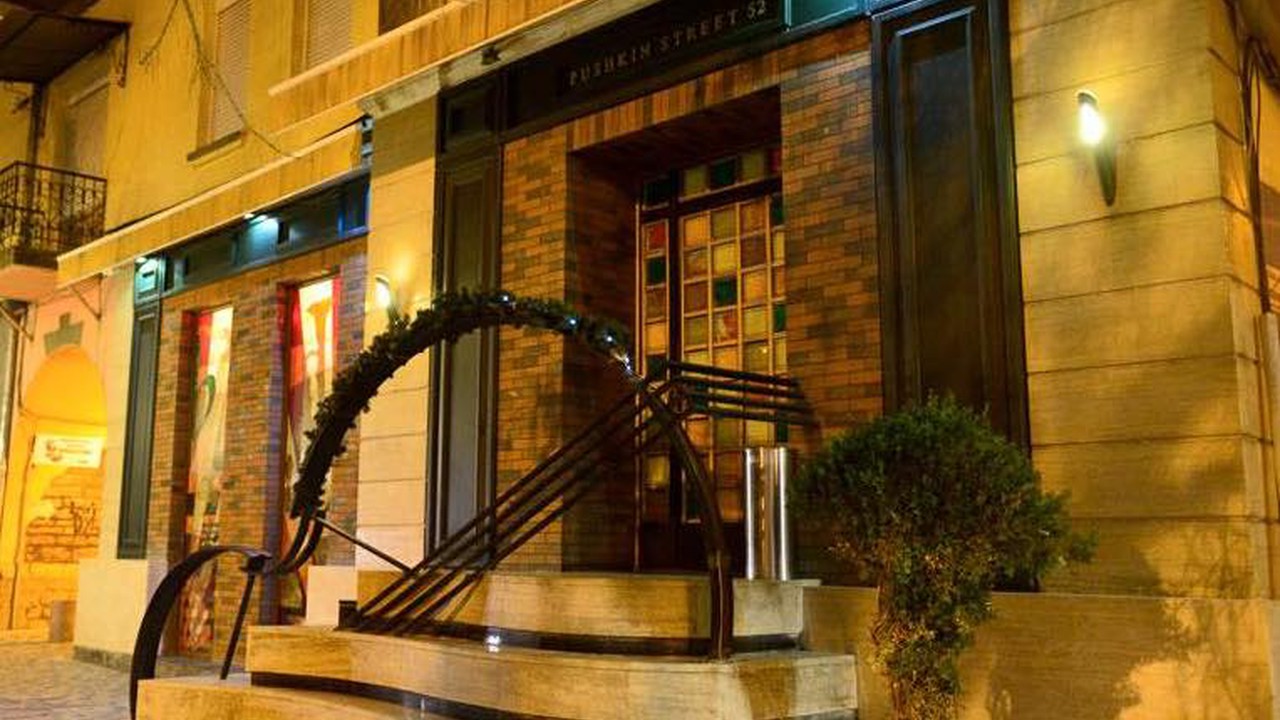CONCERT HALLS & MUSIC VENUES

HOUSE OF CULTURE: THE BUILDING OF THE MALE GYMNASIUM (SMALL HALL OF ARMENIAN PHILHARMONIC) AND MUSEUMS
State Index: 1.6.96.2
Architects: Vasili Mirzoyan, A. Vasilev, V. Simonson, Eduard Sarapyan, Mark Grigoryan
“Armenia” stained glass: 1966, Artists: Martiros Saryan, Henrik
Siravyan
The building stands on the northern edge of Republic Square at 2 Abovyan Street. Builders constructed it for the male classical gymnasium, the most important educational institution of Yerevan province, from 1911 to 1915.
Since 1920, the
structure has served various purposes. It has housed the Central Pedagogical
Museum, Yerevan House of Culture (1921), State Museum of Armenian History,
State Public Library, Technical Faculty of the State University, Armenian
Writers' House, and others. In 1932, the gymnasium's assembly hall became the
Armenian Philharmonic Hall (from 1956, the Small Hall, and from 1976, the Small
Hall of Armenian Concert). In 1936, people bid farewell to the great Komitas's
remains brought to his homeland here. Since 2003, the hall bears the name of
the famous Armenian composer Arno Babajanian. The building also houses the
National Gallery of Armenia, and museums of Armenian History, Revolution, and
Literature and Art named after Yeghishe Charents.
The gymnasium
building is a two-story, П-shaped structure built around an inner courtyard.
Classrooms line the corridors in the wings facing Aram and P. Buzand streets.
The residential areas, including student dormitories and administration
apartments, occupied the end sections of both wings. The main façade facing
Abovyan Street features a prominent central section (now the “Arno Babajanyan” concert hall) with a grand entrance adorned with large
Ionic columns. A high cornice with dentils crowns the building. It measures 21
x 26 meters and combines black and red polished tuff. The architecture blends
classical style with Armenian national building traditions and Art Nouveau
elements.
Three large windows
in the foyer of the “Arno Babajanyan” concert hall feature the “Armenia” stained glass (1966, artist Martiros Saryan, with Henrik
Siravyan's participation). It depicts motifs of Mount Ararat, plains,
mountains, trees, and city, creating a unified, symbolic image of Armenia in
Saryan's incomparable vibrant colors.
The male gymnasium
building underwent changes during the construction of Republic Square and the
House of Culture. In 1954, Eduard Sarapyan and Mark Grigoryan designed the
Museum building. They preserved the gymnasium's interior space and the façade
facing Abovyan Street while adding a third floor. In the inner courtyard, they
built the seven-story National Gallery of Armenia, which takes the form of an
octagonal drum (architects: Mark Grigoryan, Eduard Sarapyan). Architect A.
Ghazaryan and builders V. Ghulyan and Gurgen Kanetsyan also contributed to the
gallery's construction. The gallery's completion in 1980 finalized the main
square's formation.
In front of the
Museum building, in the square's table-like section, Mark Grigoryan and Eduard
Sarapyan designed a fountain pool in 1953. This feature not only emphasizes the
square's oval section but also softens its microclimate.
“Scientific Research Centre of Historical and Cultural Heritage” SNCO
Yerevan Municipality
EVENTS
CHRISTMAS BEYOND THE SEVEN MOUNTAINS
Concert hall after Arno Babajanyan
+37410 527 988, +37498 881 717
5000 - 7000 AMD
Sun 16:00














